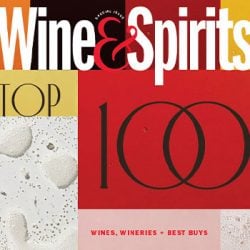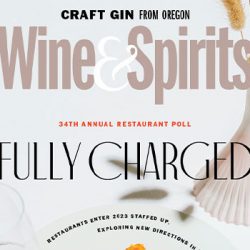

My professional training as a writer probably began when I was a “scribe” in Boy Scouts. No, I wasn’t getting paid, but I was writing for my peers rather than for a teacher in school. My role was recording our meetings and the more eventful moments of campouts.
I still like taking minutes. At our tastings, I keep a record of how our panelists are reacting to wines—and it’s more than simply tallying yeas or nays.
In fact, we do not train our critics to run tastings as stenographers, more as referees, interpreting reactions from the panelists, weighing them, deciding which wines and what commentary to pass through the filter to you. What did they appreciate? What did they love? What made them smile? As tasting reporters, we record our own responses to each wine, then interview our panelists about theirs: We filter the reactions of our tasters even as they influence how we consider our own reactions to a wine.
This may be an antique notion, in an age of social media, when everyone gets their unfiltered say.
Tasting this way, we are no less bound by our own subjective likes or the confines of our own egos. We can’t help that, but can acknowledge it, by a tasting process that encourages us and the people who taste with us to confront our subjectivities and our egos. By participating, we have to allow ourselves to be embarrassed by falling in love with a wine that our friends and fellow tasters don’t particularly like. You might be surprised by how many talented tasters won’t tolerate that form of embarrassment, whether during the tasting, or, once the identities are revealed, in relation to their work as wine buyers.
This kind of research is fraught with random occurrences—bottles that may suffer in shipping or storage, below-threshold flaws, a falling barometer one day, a rising barometer the next. But, as you will find in this compilation of a year’s worth of tastings, presented in these pages, the results are not random. Sometimes, a wine producer will be mystified that we review their inexpensive wine more highly than their own preferred selection. In fact, when our results do not align with the winemaker’s intention or the market overall, we take it as a signal. More often than not, it leads us to a discovery, the kind that may be the most valuable insight and information we can share with you.
You’ll find some obvious picks in the pages that follow—from wineries that have aligned their current releases to their well-established reputations. But consider the surprises—prominently featured here under names you may not know well, or, perhaps, whose wines you have never tasted. You’ll find them among the Top 100 Best Buys, some remarkably affordable for what they bring to the table. Or in the diversity of our Top 100 Wines of the Year. And, if you find names that surprise you among our Top 100 Wineries, know that they have earned their place through remarkable performances across a range of wines. We encourage you to try them, if not blind, then with an open mind. Tastes can be revelatory, and we find it fascinating when wines open a back door to taste, past our egos and whatever framework of limitations they might comfortably impose.
There’s plenty of comfort in the wines we present here, our favorites from a year of tastings, and many that took us out of our comfort zones, to pleasures and insights we may not have found before. Welcome to our harvest report at Wine & Spirits.
Joshua Greene is the editor and publisher of Wine & Spirits magazine.
This story appears in the print issue of Fall 2023.
Like what you read? Subscribe today.



















